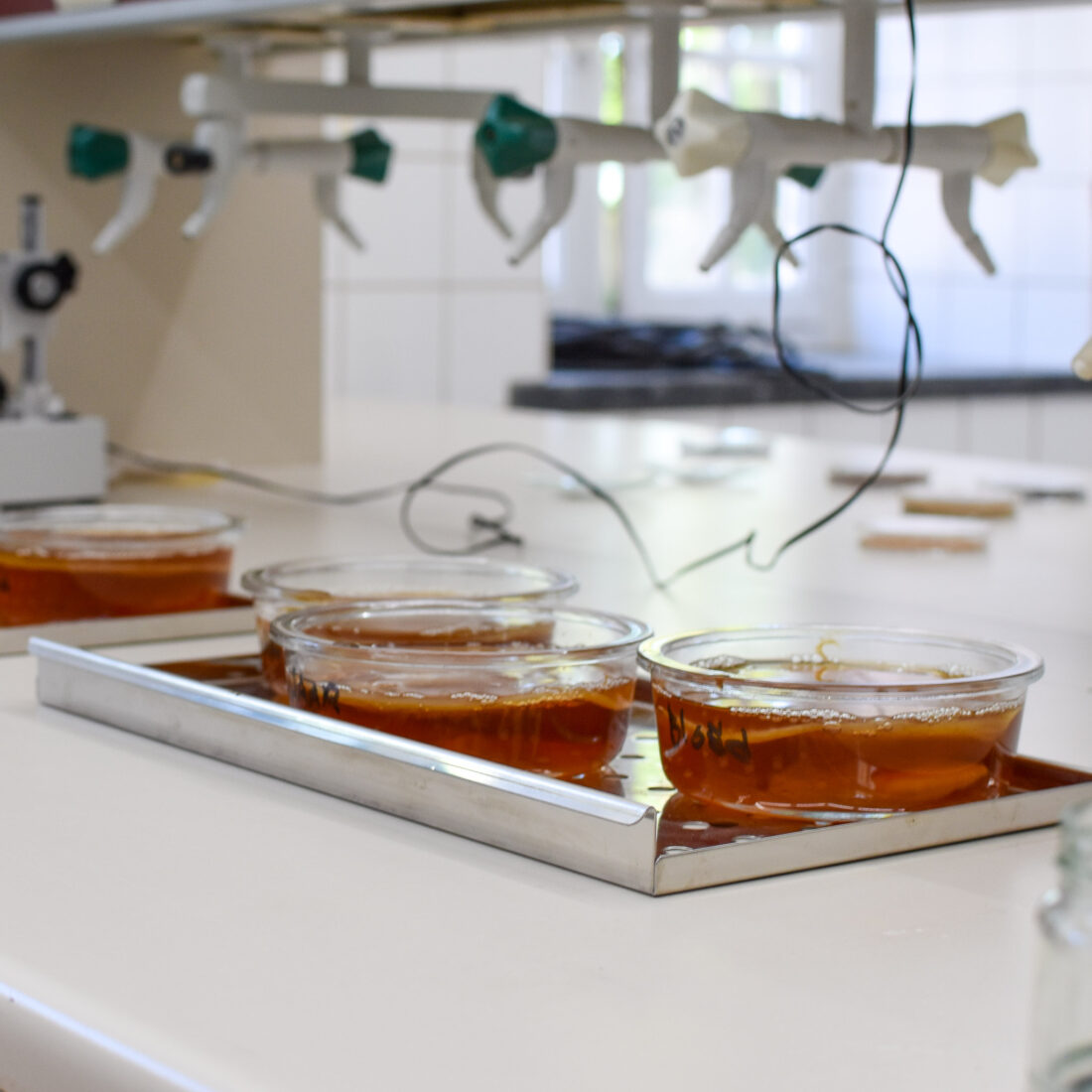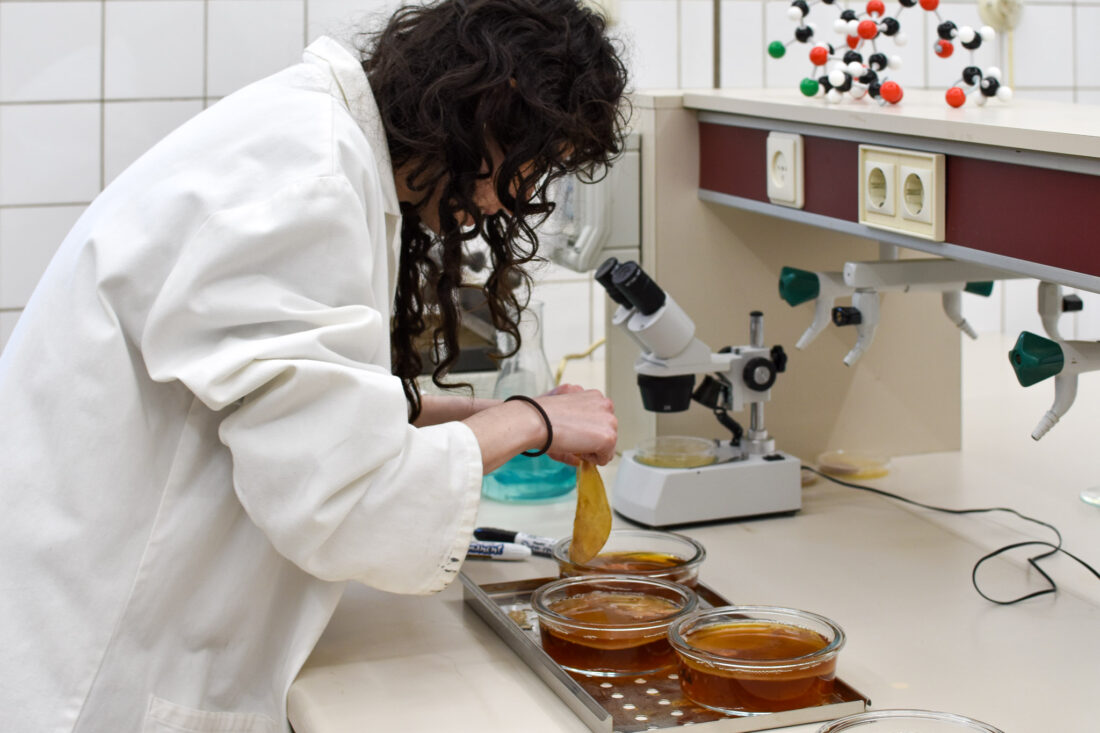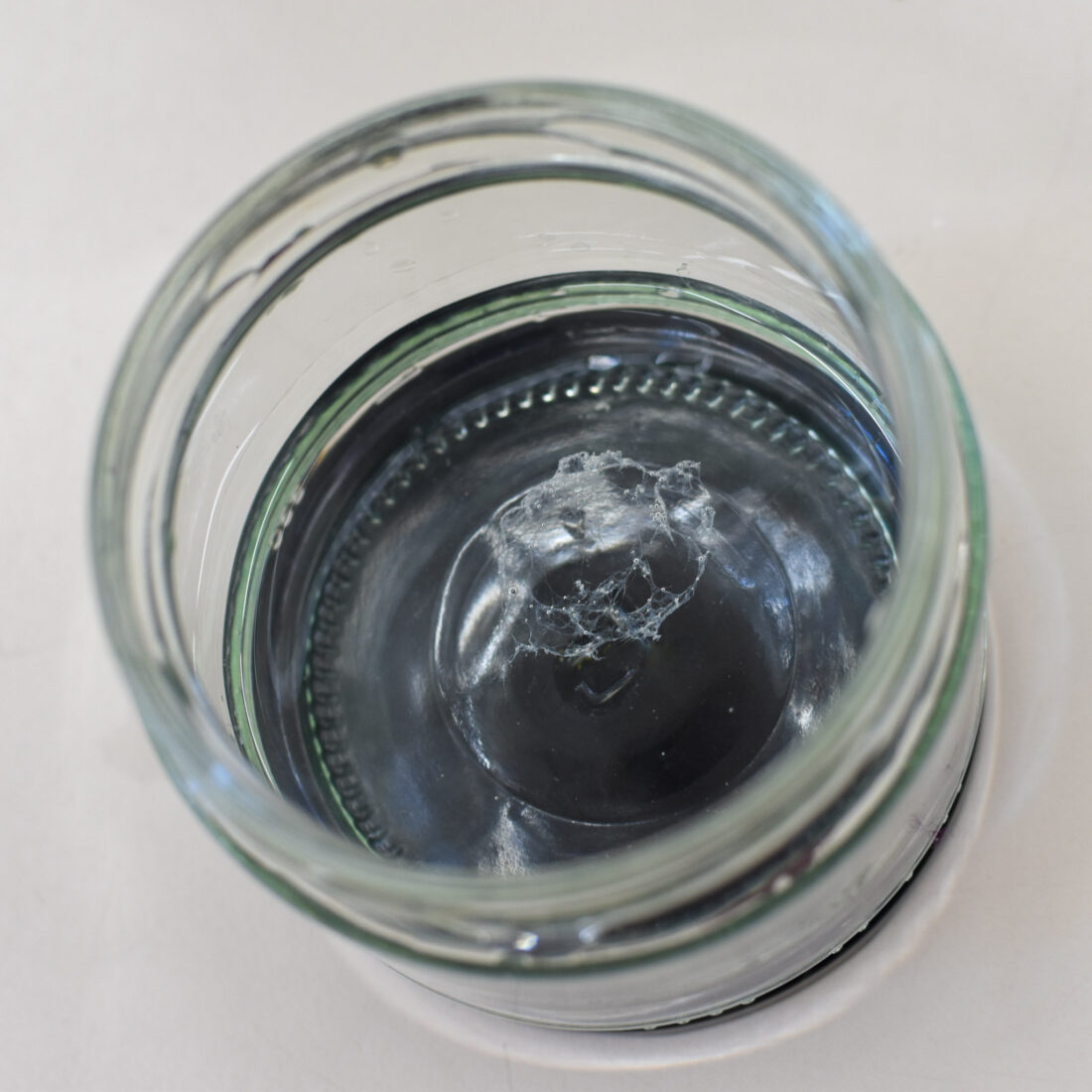Developing a skin like urn
It’s early in the morning, but Talent Pressure Cooker participant Lauren Raaijmakers is already moving through the lab in her white lab coat. In front of her are 6 dishes with a brown liquid that have a firm substance on top. Two of them say “cheek”, two others are labeled with “hair” and the last two say “blood”. She stirs a clear liquid in a glass jar. Lauren tells us that she just put in some saliva and is now extracting the DNA. It doesn’t show yet.
The idea is to infuse the DNA in an urn that has a skin like texture. Lauren has displayed her first prototype of this urn at the Symbiocene Forest exhibition last year during the Dutch Design Week.
Her concept of an urn with a skin like texture originated after her grandfather’s passing during Covid-19. Since she sadly wasn’t able to hold her grandfather’s hand on his deathbed she longed for closeness. A sentiment which brought her upon the idea of the urn.
During last year’s exhibition, the urn consisted of a natural rubber latex to mimic the texture of human skin. This year however, she is taking it a step further. As she is in the lab, she is developing a new version that actually incorporates the DNA of the deceased.
In this new prototype the skin like texture doesn’t come from latex, but from SCOBY, (an acronym for) a symbiotic culture of bacteria and yeast. It’s a byproduct that comes from the kombucha making process. SCOBY is a cellulose layer which can be dried and molded into any desired form, such as an urn.
Lauren doesn’t only incorporate DNA from her saliva into the urn. She also experiments with her own blood and hair. Lauren explains: “I could imagine that the results of this experiment can be quite appalling. The texture of the dried SCOBY and the hair can make the material look very human-like.”
But for Lauren this isn’t necessarily a bad thing. It’s crucial that her project, called Touching Death, makes you come to terms with death. This urn should never be an illusion of a living thing. It shouldn’t keep you in denial. Accepting death is part of the mourning process.
“In the West we have a very solemn relationship with death and mourning. We are very distant towards death. We treat mourning as a very heavy, although passive process.” Lauren tells us. She believes that mourning could be a more active process that doesn’t solely exist of sadness. An active mourning process can leave you with happy memories. Touching Death can be a tool to let us explore how we mourn.
Before the concept of the skin like urn, Lauren had no biological or chemical knowledge. She smilingly calls herself a “science noob”, but this didn’t hold her back to realise a prototype. She had a vision and dove into the scientific processes that led her to where she is now.
The iteration of the urn will be on display during this year’s Dutch Design Week at BioArt Laboratories’ the Symbiocene Forest: Progeny of the Father of Genetics.
As we let Lauren continue her lab work we look at the glass jar once more. A stringy network DNA appeared in it. All it took was a little patience.
Date
May 9, 2022
Category
Events, Experiments





